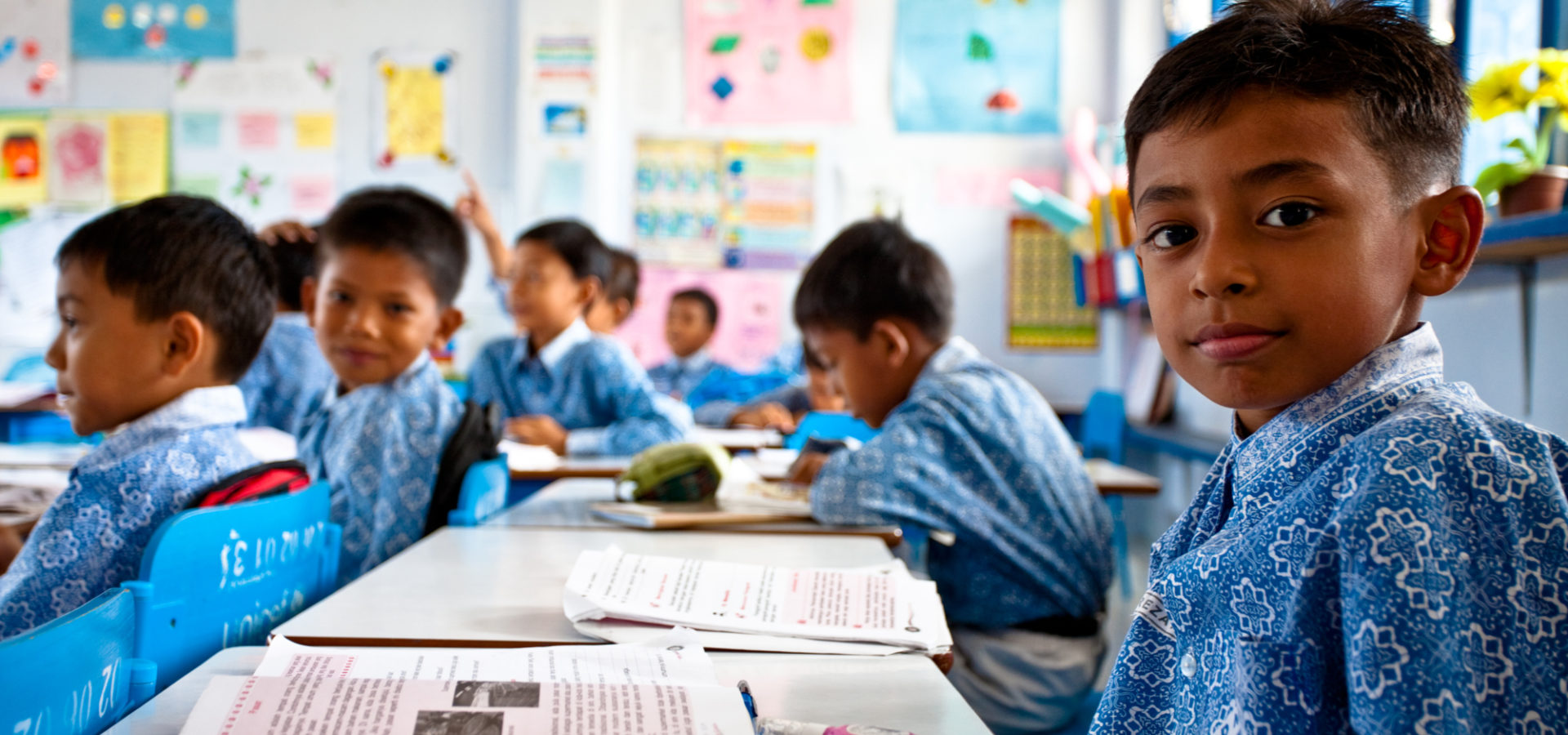The United Nations Office for Project Services (UNOPS)
Post-disaster recovery: Building schools and health centres in Indonesia

Hundreds of primary schools have been built in Indonesia, increasing the quality of education and the number of primary school students in the country following the 2004 tsunami.
The tsunami caused catastrophic damage in Indonesia, leaving more than 200,000 dead or missing, destroying vast amounts of infrastructure and displacing more than half a million people. Large numbers of schools were affected, with 1,147 destroyed or severely damaged in Aceh province alone, threatening the education of tens of thousands of children.
In 2005 Nias Island, which had escaped the worst of the tsunami effects, was struck by an 8.7 magnitude earthquake, killing hundreds and damaging or destroying most of the island’s infrastructure.
The United Nations Children’s Fund (UNICEF) contracted UNOPS to build the schools, with a budget of over $71 million. The project was aimed at creating educational facilities of a much higher standard than existed prior to the tsunami.
Achievements
A total of 225 permanent primary schools and 1,467 classrooms have since been built in Aceh province and on Nias Island. The schools are capable of serving over 44,000 students.
In addition to increasing the number of children enrolled in Indonesian primary schools, the project has led to significant improvements in the quality of education, reduced drop-out rates in elementary schools and increased primary school completion figures. As a result, the project has contributed to Millennium Development Goal 2, to “achieve universal primary education”.
The basic school design set new standards in earthquake resistance and typically incorporated: six classrooms,
separate toilet facilities for girls and boys with washbasins to encourage improved hygiene, a teacher’s office, and an outdoor play area. The designs of all school facilities were adapted to the specific needs of each community and the
requirements of each construction site. All of the schools were completed by March 2010.
Hezisokhi Hulu is the principal of Hiliaurifa School in South Nias. He is the only government employee at the school – the other 11 teachers volunteer and are paid token allowance by the community.
The school serves 322 students in a community comprised of one main village and five smaller villages. “There are no roads in this area,” Mr Hulu explained. “I have to walk 4 km a day, to and from school.” The earthquake in 2005 destroyed the original school.
“We were very lucky, as it happened at night when theschool was empty, so no one was hurt,” Mr Hulu said.
In 2009, UNICEF and UNOPS were asked by the Indonesian government to construct a permanent school in South Nias. The new Hiliaurifa School has since been completed.


We have a word ‘Adem’, it means cool breeze and that’s what we call the school.
“This is by far the best building in the community,” said Mr Hulu. “Many people in the community helped with the labour for this school...we all contributed by bringing the materials from the river crossing, through the jungle and up the mountain.
“The children had a chance to learn how modern buildings are constructed, it was a great lesson for us all.” He added: “Our new school is very well designed, the ventilation and light is fantastic. Outside can be very hot and humid, but we all feel cool inside.
“We have a word ‘Adem’, it means cool breeze and that’s what we call the school.”








